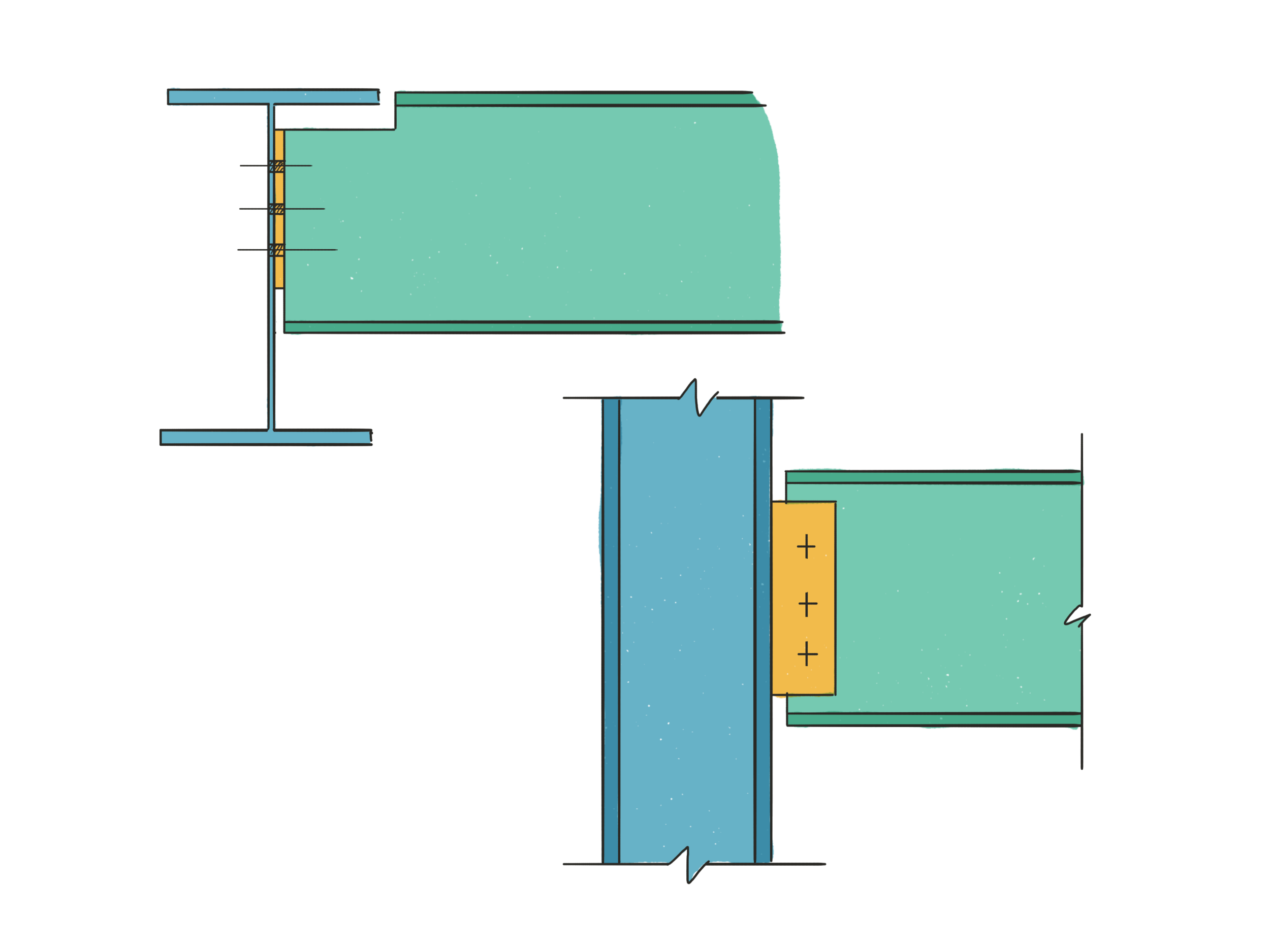Connections: the basics
This is to be the first in a series of articles, where the aim is to introduce the different types of steelwork connections, when the various types should be used, and what ought to be considered in their application. I am by no means an expert in the field but I have 10 years of experience in designing connections, both for buildings I have designed myself and for buildings designed by others, so hopefully my advice is practical and useful if not necessarily academic.
I hope that this series will prompt engineers designing steel structures to consider how their selection of members constrains connection design, I hope it will aid connection designers from making avoidable elementary mistakes which, for example may cause members to be impossible to erect. I also harbour a deep hope that this series is at least informative and ideally at least a little bit interesting.
Steel to steel connections can broadly be split into two main categories: those which allow rotation, and those which do not. We call the former pinned connections and the latter moment connections.
Let’s start our brief overview on familiar territory; pins.
Pinned connections
At the end of our pair of prelude articles, we had defined what a pin connection is and how one behaves. Broadly speaking, pinned connections are typically used in the following circumstances:
Beam to beam, and beam to column connections
By far the two most common types of pinned connection are the first two - beam to beam, and beam to column, and as luck would have it, both work in almost precisely the same way.
Column to column connections (hereafter column splices)
Column splices are, even by the standards of a series of technical articles regarding steel connections, fairly dull. They come in two broad flavours, which I’ll cover at a surface level, and that’s about your lot.
Bracing connections
Bracing connections on the other hand are both varied and interesting. They take many forms and are often the most crucial connections in a structure. Correctly designing your bracing system is critical, thus ensuring the connections can transfer the loads as intended is equally critical.
Truss Connections
Truss connections are a fascinating topic to me as much because of the politics surrounding who actually designs them and at what stage in the design process as due to their inherent variability and complexity.
Moment connections
Moment connections, or moment resisting connections are effectively the opposite of pinned connections: they are designed to be rigid, i.e. they resist rotation. They come in all the same flavours as the pinned connections above, except for bracing connections. This is because braces should never bend, therefore their end connections should never need to be designed to resist bending.
Beam to column moment connections
These are probably the most common kind of moment connection by a hair. They come in a few main varieties, but by and large are fairly straightforward.
Beam to beam moment connections
These tend to follow the form of our column splices from the pinned category. As such, they aren’t massively varied, but nevertheless worth a short article on.
Column splices
Much like their pinned counterparts. In fact so much so it’s likely I’ll cover both pinned and moment resisting in one article.
Truss connections
Moment resisting connections are rare in trusses - they only tend to appear in a specific type of truss called a Vierendeel truss, which is itself essentially a rigid ladder frame. The connections are straightforward beam to column type affairs, but the trusses themselves and the likely restrictions on connections are worth covering.
What next?
Having covered a lightning round of all the basics, I suppose it’s best to dive right in and begin at the beginning. Next time, we start on pinned beam to beam and beam to column connections.
As always, comments or corrections welcome at @martynpie on Twitter, or by email on martyn@martynpie.com.
All today's sketches drawn in Paper by 53.







